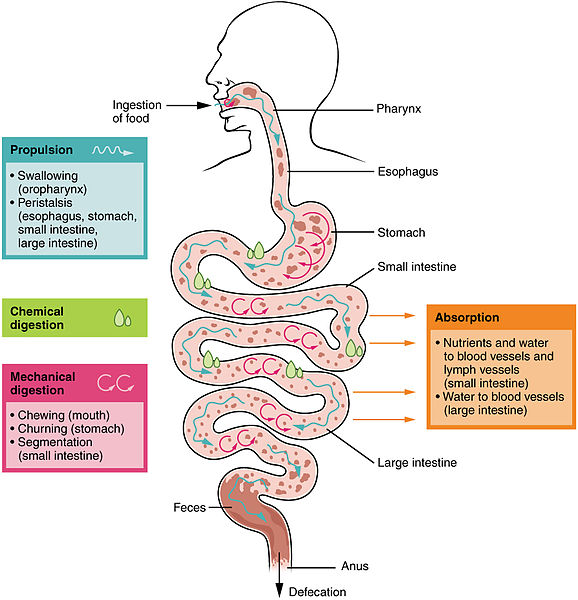Process of absorption of digested food

Absorption takes place in the small intestine in the ileum whose surface area is increased by numerous finger-like villi (singular:villus). The villi contains smooth muscle enabling them to contract and expand, thus bring them into contact with newly digested food
Glucose and amino acids are absorbed by a combination of diffusion and active transport across the epithelial lining of the villi into the capillaries beneath. These capillaries drain into the hepatic portal vein where the digested food is conveyed to the liver.
Fatty acids and glycerol are absorbed into the epithelial cells lining the villi and there resynthesized into neutral fat which is shed into the lymph vessels of the villi as a white emulsion of minute globules. This gives the lymph vessels a milky appearance, for which reason they are known as lacteals. The lymphatic system opens into the veins from where fat finds its way into the blood.
The villi increases the absorption area of the small intestine because of the finger-like projections. Epithelial cells are folded into micro villi to further increase the surface area for absorption, the villi are in constant keeping them in touch with digested food; villi are highly supplied with blood vessels for transport of sugar and amino acids; there is presence of lacteal duct for absorption of fatty acids and glycerol; villi is adapted to its functions for absorption of digested food. Inorganic salts, vitamins, and water are absorbed in the small intestine
#trevonjb
#cragrant
#olamex
#promo-steem
#whale-power
#airhawk-project
@alerobot